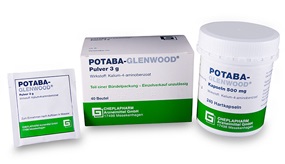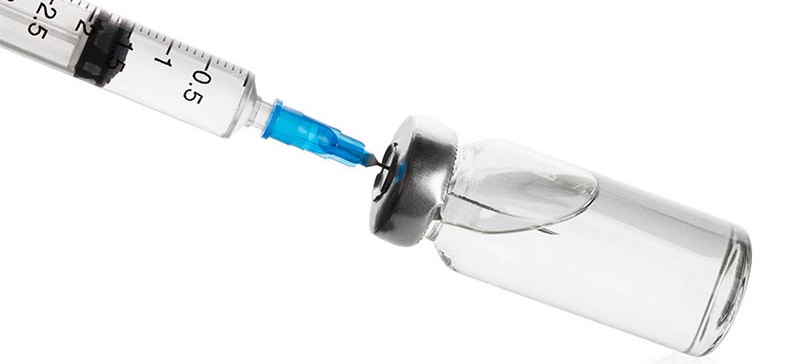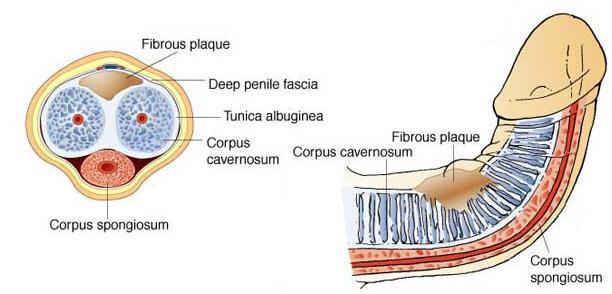Medical Management and Surgical Management of Peyronie’s Disease
Peyronie’s Disease is an inflammatory disorder of the membrane that covers cavernous bodies inside the penis. Chronic inflammation of the tissue causes appearing of scars (plaques) that lead to a painful and curved erection. It is not literally an erectile dysfunction, but severe forms of Peyronie’s Disease can occasion inability to have a sexual intercourse. Causes of the disease are actually not known; sometimes injuries and genetics are claimed to be an origin of the condition. It mostly occurs in middle-aged men, but it is not the rule. The men who developed scar tissue in other parts of the body (e.g. Dupuytren’s contractures) have a higher probability to get Peyronie’s Disease.
Peyronie’s Disease Symptoms
You can hardly notice any changes if your penis is not erected. But when getting an erection, you may feel pain and find a curvature of your pennies causing discomfort. Sometimes plaques can be visible through the skin. If they are numerous, they can form a ring around the penis that may look like a bottleneck. Scar tissues are hard and lack of elasticity and that is the reason why your penis bends.
Peyronie’s Disease Treatment
The mild form of the disease can eliminate without any treatment. For this reason, if you do not experience significant discomfort, your doctor can recommend you watchful waiting. In case you have much pain and the disease affects your sexual life, you need an appropriate treatment. Depending on the degree of Peyronie’s Disease, medical or surgical treatment may be required.
Conservative Treatment of Peyronie’s Disease
Medication is always a first step to cure plaques in the penile tissues. Medical management of Peyronie’s Disease includes pills and injections.
Oral Pills for Peyronie’s Disease
There is a number of prescription and over-the-counter oral preparations to fix your problem. But you should take your time and evaluate them, as the drugs for Peyronie’s Disease are different both in terms of effectiveness and price. You should consult, first, with your doctor and, then, with your wallet to consider the best medicine.
Here you find a nearly exhaustive list of possible options:
- Pentox, generic name Pentoxifylline. Other brand names include Trental, Pentoxil, Flexital.
Pentoxifylline, probably, is the most popular choice. Primarily, this medicine was used to treat muscle pain caused by peripheral artery disease, but, then, it was found that pentoxifylline is effective for Peyronie’s Disease, improving blood circulation and preventing scarring. Pentoxifylline interacts with a number of other drugs, so you should inform your doctor what else you take.
- Potaba (aminobenzoate potassium).

Potaba is an antifibrotic used for certain skin and muscle conditions including Peyronie’s Disease. It works increasing oxygen in the tissues, which makes them softer and improves their elasticity. It is an expensive drug, though effective. You should not take Potaba with sulfonamide medicine.
- Tamoxifen
This is an FDA approved medicine for breast cancer, but it also used for Peyronie’s Disease. It thought can help to eliminate pain and reduce plaques’ size, but latest researches did not show significant improvement in curvature of the penis.
- Colchicine.
Colchicine is an inhibitor of collagen production that makes it effective to prevent growing of scar tissues. It is used for medical management of Peyronie’s Disease if it is still progressing. Colchicine is recommended for short-term use, as the drug has various side effects and can harm your health.
- Carnitine (Acetyl-L-Carnitine)
Carnitine is an amino acid produced by our body. It is an antioxidant that helps to prevent accumulating toxic compounds in body cells and destroy fats. It eliminates inflammatory response and is used in the acute stages. Comparative researches of acetyl-L-carnitine and tamoxifen proved that carnitine is more effective in reducing pain and preventing the development of Peyronie’s Disease. It can be used independently or in comprehensive therapy together with injections of Verapamil.
- L-Arginine
L-Arginine is another natural amino acid. Converting in the body into nitric oxide, L-Arginine contributes to vessel dilation and improves circulation. Although its action is not studied enough, there were some reports that L-Arginine improves curvature and lengthens the penis. It is also may be used to treat erectile dysfunction, but you should do this carefully as L-Arginine interacts with other ED-medicine including Viagra.
- Vitamin E
Vitamin E is widely used for the management of Peyronie’s Disease, although its effectiveness is still contradictory. Doctors are divided into two camps: those who believe in the effectiveness of vitamin E and those who think it is useless. Nevertheless, vitamin E is included in the most of treatment plans for Peyronie’s Disease. In any case, it is obviously harmless and does not cause any side effects.
Injections for Peyronie’s Disease
 Injections into scar tissues are proven as a more effective method to improve curvature rather than oral medicine.
Injections into scar tissues are proven as a more effective method to improve curvature rather than oral medicine.
Among the medicines used for penile injections are:
- Collagenase (Xiaflex®).
The full chemical name of the drug is collagenase clostridium histolyticum (CCH). Xiaflex is the only FDA approved medicine to treat Peyronie’s Disease. It is used when curvature of the penis is more than 30 degrees. Collagenase breaks down collagen that stimulates plaque development.
- Verapamil.
Verapamil is a drug for treatment of hypertension but it is also considered a remedy for Peyronie’s Disease for pain and curvature management.
- Interferon.
Interferon acts as collagen inhibitor and regulates inflammatory response in the tissues. Although some studies suggest positive results of interferon action, additional researches are required for scientific approval of interferon.
Surgery for Peyronie’s Disease
Surgical management of Peyronie’s Disease is suggested in those patients who have severe deformation of the penis that cause much pain and lead to inability to maintain an erection. There are a few types of surgical interventions:
- Plication (suturing).
To correct penis curvature, the decision can be made to suture incurved side of the penis that evens the sides. A disadvantage of the method, that your penis can become shorter.
- Incision or excision.
Incisions in scar tissues are made to release and stretch the effected membrane tissue. Sometimes, a graft can be taken from healthy tissues to cover the holes in the membrane. This procedure has a risk of erectile dysfunction as a possible complication.
- Penile implant.
This kind of surgery is used when Peyronie’s Disease is accompanied by erectile dysfunction. In this case, the corpora cavernous are replaced by implant material to restore the ability of the penis to grow.
Surgery is the last shift, when the other means do not help, and its success a good deal depends on the skill of a surgeon. That is why thorough choosing your doctor is extremely important.
Living with Peyronie’s Disease
The nature of Peyronie’s Disease has not been studied well yet; nevertheless, the modern medicine offers a variety of remedies and techniques to cope with the problem. There is no reason for depression or anxiety: comprehensive approach to treatment will help you to find the best solution that suits for you personally.







